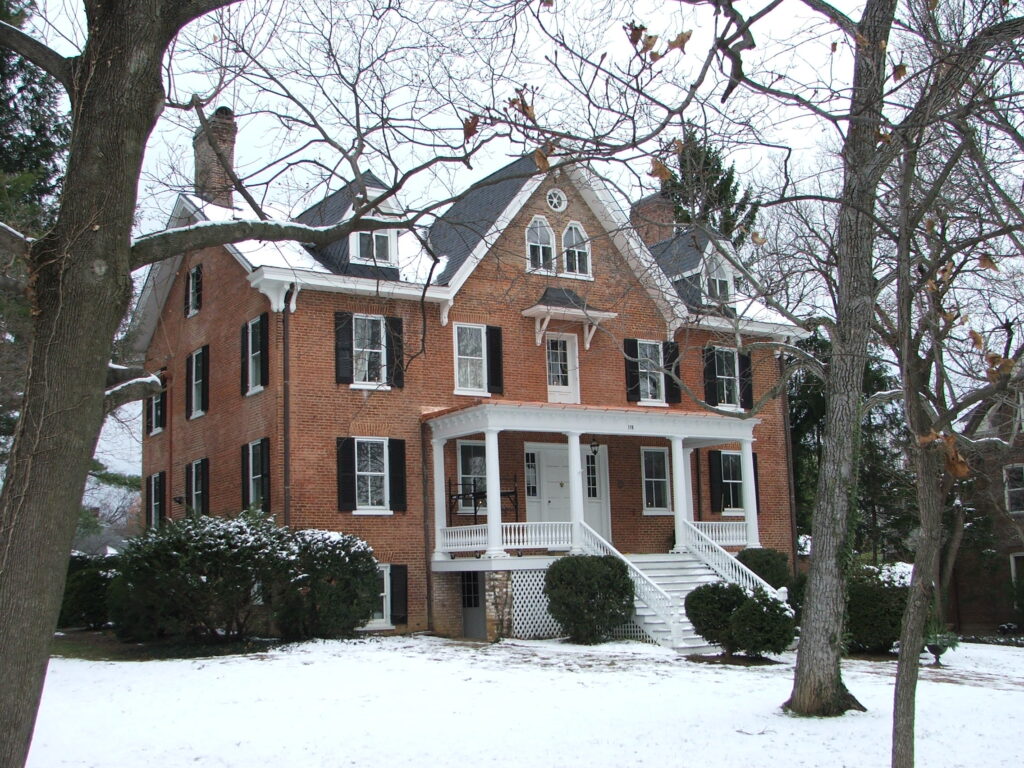Oops! If you tried to download the newsletter last week, the file only partially uploaded. The full spring newsletter is now available. Thanks to Dave for spotting the issue!
This week the roof at the Hexagon House got some TLC. We learned during the evaluation process we still have a real tin roof. Although we don’t recommend hanging on to paint cans for this long (keeping your paint swatches and color mixing instructions are sufficient and less hazardous), we were also able to color match the paint from the 1997 work. Our roof looks as good as new. Many thanks to the MSV and Winchester Roofing for helping to keep a roof over our heads (literally)!
As you may have heard, on April 6 there was a Board of Architectural Review application for 119 S. Washington asking for retroactive approval of work done to the exterior of the home, including door replacement and alteration to the fence and walkways. Not all the items were addressed at that meeting, which was continued in the April 20th meeting. As is usual in cases like this where work is done and then it seeks retroactive approval, it is PHW’s position that the work should be evaluated as if it is a fresh application and the design guidelines applied as usual. This was not a case where an owner or tenant could claim ignorance of the BAR process, as he had applied numerous times before for other exterior changes.
This was certainly an unfortunate situation, as certain items (such as the fence and gate “piers”) were approved in a completely different manner that was in line with the historic documentation of the building. PHW was under the impression the owner was aiming to restore the appearance of the home as documented in some ca. 1905 images; the original approvals would have been in line with this work. We understand the most historically-inaccurate of the changes to the sidelights around the front door will be brought back to the BAR at a future meeting with a revision; at this point there is not information on exactly what the sidelights may look like.
The changes to the fence are certainly not our preference from a historic perspective, and while we understand the decision made at BAR it does not make what happened in any way right or excusable. As we often say in cases of demolition, once an item is removed from a home, it is very difficult to restore it; matters become even more complicated when the work encroaches on city sidewalks and rights of way. Removing these items can impact your ability to restore them at a later point.
We also would urge residents in the historic district to embrace some of the quirks of their homes and properties. It is unlikely you will find a perfectly square lot and a perfectly centered house; the quirkiness is part of what attracts many people to older homes. To try to perfect something that has already aged gracefully tends to lead to a feeling of artificiality – certainly the opposite of what we want to encourage in a historic district.
As you think over this situation, we encourage those who have only heard this described second or third hand to review the meetings in question. You may watch the meetings for April 6 and April 20 online through the City’s website and draw your own conclusions. Much of the BAR process relies on good faith cooperation between applicants, staff, and the volunteer board. This was definitely one of the more stressful BAR meetings of recent times, and we thank the City staff and BAR members for working through a very complicated situation to the best of their abilities.

